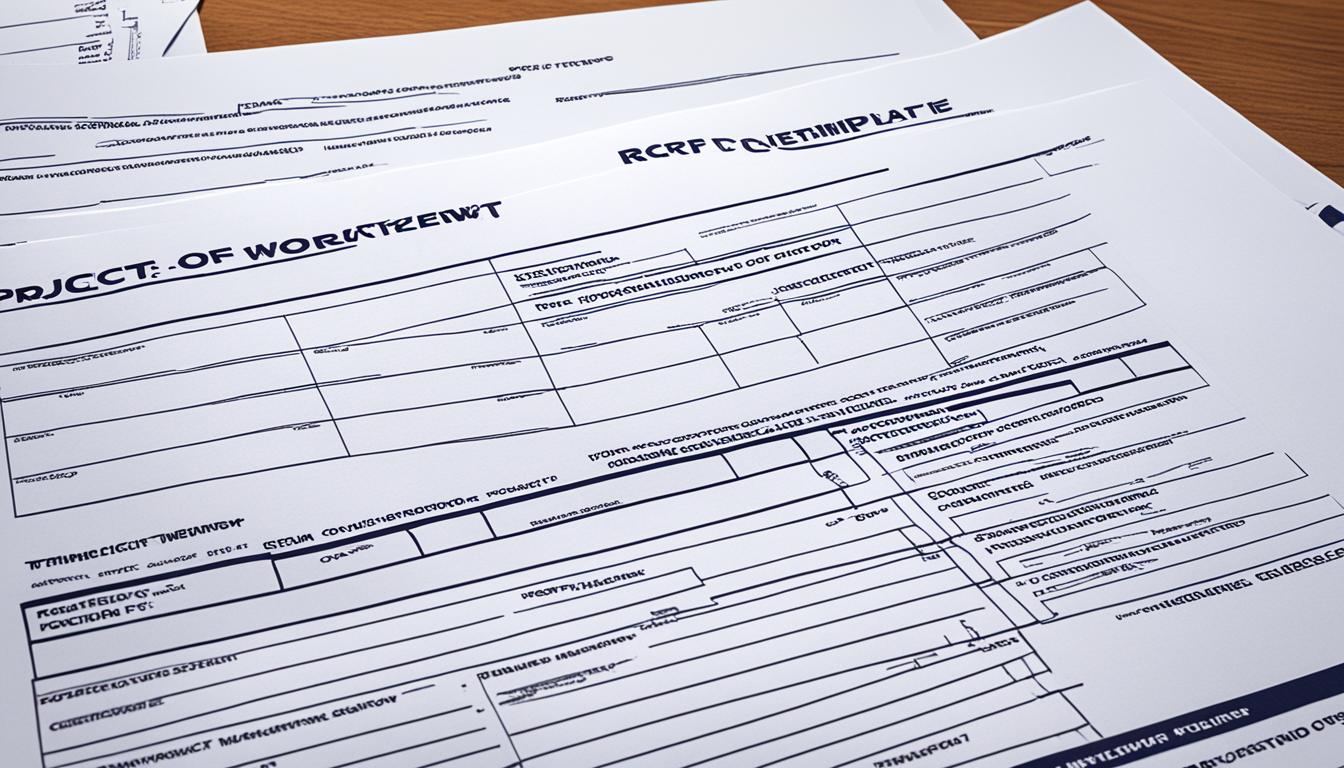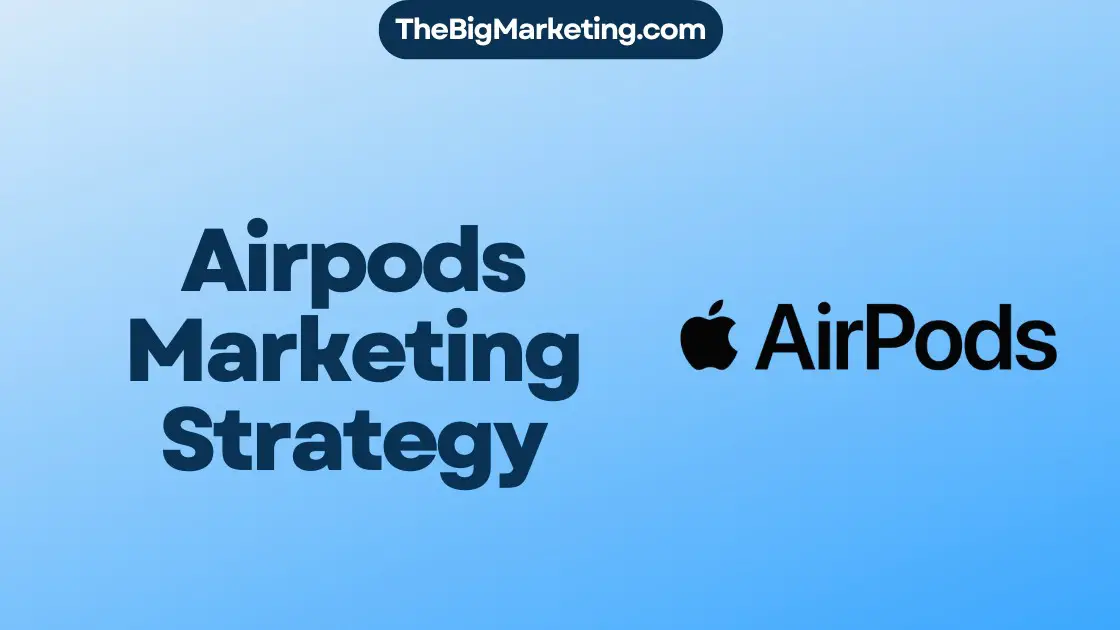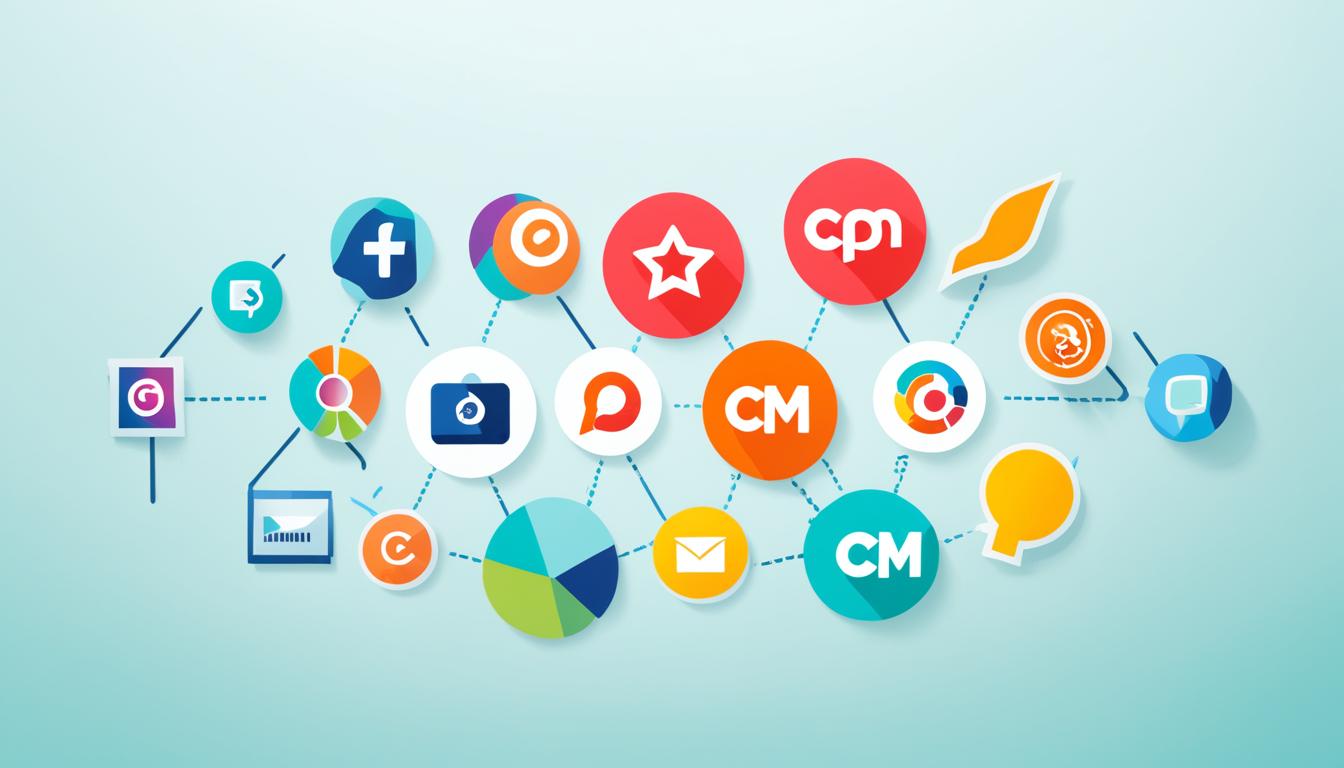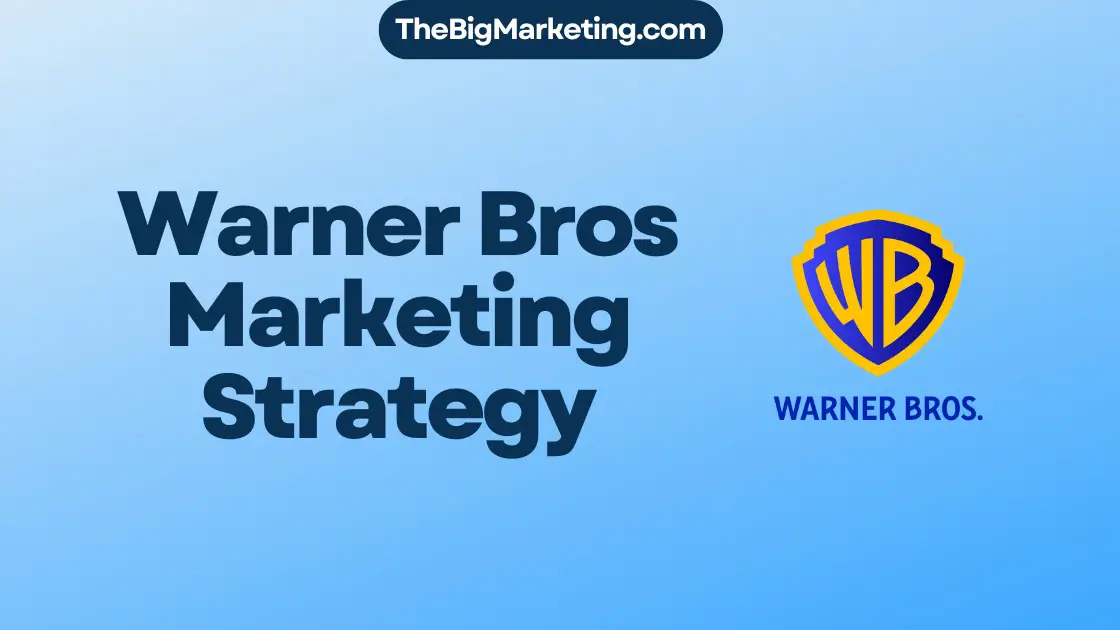Content marketing is key in successful marketing strategies today. Marketing teams use a content marketing platform (CMP) to plan, work together, and make content that connects with their audiences. A CMP helps in making the content creation process smoother, gives insights based on data, and improves marketing strategies. This boosts brand awareness, leads, and revenue.
When content operations get complicated and tracking revenue is key, a CMP is very useful. It automates tasks, provides reports and analytics, and has tools like editorial calendars and asset management. Yet, using a CMP well requires money and teaching the team how to use it.
This article digs into CMP in marketing, showing its main features, advantages, and how it’s different from content management systems (CMSs) and marketing automation platforms (MAPs). We will talk about how to choose and start using a CMP. We will also introduce a creative management platform (CMP) for digital advertising.
Key Takeaways:
- A content marketing platform (CMP) helps marketing teams streamline content creation, collaborate effectively, and optimize marketing strategies.
- CMPs automate workflows, provide data-driven insights, and offer features like reporting, analytics, editorial calendars, and asset management.
- Implementing a CMP requires a financial investment and training for effective usage.
- CMPs differ from content management systems (CMSs) and marketing automation platforms (MAPs) in their core functionalities and focus areas.
- A creative management platform (CMP) facilitates the creation, distribution, and performance measurement of digital advertising campaigns.
What is a Content Marketing Platform (CMP)?
A content marketing platform (CMP) is a tool that makes creating and sharing materials easier. This tool helps teams increase brand recognition, get more leads, and earn more money. They manage the content-making journey from the start to how it performs financially. This means marketers can make better content instead of worrying about the process.
These platforms connect with many other software tools. This includes systems for managing content, social media, marketing automation, and email. It’s great for teams that handle lots of content. And for those who want to see how content helps with sales.
CMPs are key for keeping a brand’s look and message consistent. They store everything marketing-related in one place. This makes sure everything shared across channels matches, strengthening the brand’s identity. Using a CMP, updating and managing brand tools like logos and guidelines is easy. This keeps the brand’s look correct everywhere.
Key Features of a Content Marketing Platform (CMP)
| Feature | Description |
|---|---|
| Content Planning and Ideation | Offers tools for brainstorming, topic research, and content strategy development. |
| Editorial Calendar | Provides a visual view of content schedules, deadlines, and publication dates. |
| Collaboration and Workflow Management | Enables seamless collaboration among team members, allowing for efficient content creation, editing, and approval processes. |
| Asset Management | Acts as a repository for storing, organizing, and retrieving content assets, such as images, videos, and documents. |
| Content Distribution | Facilitates the distribution of content across multiple channels, including websites, social media platforms, and email. |
| Analytics and Reporting | Offers robust analytics and reporting capabilities to track content performance, audience engagement, and conversions. |
A CMP makes creating and managing content simpler. It boosts teamwork and gives insights to better marketing methods. With a CMP, teams handle their brand well, make engaging materials, and fine-tune their content tactics for the best results.
Benefits of a Content Marketing Platform (CMP)
Content marketing platforms are a big help to marketing teams. They make things more efficient by cutting down time spent on tasks. This lets teams focus more on making content and making it better. CMPs handle a lot of the tedious work automatically.
These platforms offer tools like analytics and schedules for planning. They help teams track how well content does and make smarter choices. Calendars keep everyone on track and working together smoothly. Features for brainstorming bring up fresh ideas based on what people like. Managing assets means teams can easily find and use their content again.
A CMP can also help save money on marketing. It does this by simplifying tasks and making processes smoother. It shows clearly where the money goes, aiding in budget management. Teams can see where they might be spending too much or not enough. They can then use their budgets in the best way possible.
In summary, CMPs make content marketing work better and can save money. They help keep track of everything from making content to spending budgets. Before getting a CMP, think about the costs and how to start using it.
Key Features of a Content Marketing Platform (CMP)
Content marketing platforms (CMPs) make creating content easier and more effective. They have many features that help marketing teams. These features allow them to plan, create, and manage appealing content for their audience. Let’s look at some key features that make CMPs vital for content marketing success.
Reporting and Analytics
CMPs are great for detailed reporting and analytics. They offer insights on leads, revenue, and how well content performs. Marketers use this data to make smart decisions about their content strategies and spending.
Editorial Workflow Management
Smooth collaboration and efficient content production are key. CMPs offer tools for managing editorial workflows. They allow for role-based reviews and approvals during content creation. This makes the process faster, reduces delays, and ensures high-quality content.
Ideation and Topic Research
CMPs have ideation tools that find trending topics based on search and social data. This helps marketers create relevant and engaging content. By understanding audience interests and market trends, CMPs help in producing content that grabs the audience’s attention.
Editorial Calendars
Editorial calendars show the schedule of content production. CMPs provide features to plan and organize content effectively. This helps teams deliver content on time and maintain a regular publishing schedule.
Asset Management
Managing content assets well is crucial. CMPs help in organizing and storing assets like images, videos, and documents. This makes collaboration smooth and avoids redoing work.
Integration with Marketing Technology Systems
CMPs integrate well with other marketing software. This smooths out the flow of data and content across systems. It ensures a unified approach in marketing operations.
Content Display and Rendering
CMPs also ensure content looks good on all devices and channels. This feature checks that content is optimized, making sure users have a great experience on any platform.
CMPs offer many features that boost marketing teams’ efforts in content strategy. From deep analytics to smooth workflow and asset management, CMPs have tools that improve content creation and result in big impacts.
Differences Between a CMP, MAP, and CMS
A content management system (CMS) helps manage and publish content to websites, mobile apps, and more. It manages editorial processes, page layouts, user permissions, and making content global. A content marketing platform (CMP) works from a project point of view. It helps with planning, making calendars for content, and understanding how content performs. CMPs are more basic than CMSs and usually work with them. Marketing automation platforms (MAPs) work with CMPs and CMSs to manage leads, do email marketing, and track visitors. MAPs aim to better understand customer behavior and when they’re ready to buy.
In comparing these platforms, it’s key to know what each does in marketing. A CMP supports making and managing content. A CMS deals with putting content out there and working with it globally. Meanwhile, a MAP focuses on automating marketing actions and handling leads. Knowing what each platform does helps companies pick the best tools for their needs.
Here is a comparison table summarizing the key differences between a CMP, MAP, and CMS:
| Content Management Platform (CMP) | Marketing Automation Platform (MAP) | Content Management System (CMS) |
|---|---|---|
| Supports editorial workflows | Handles lead scoring and qualification | Publishes content to websites and other channels |
| Offers ideation and editorial calendar features | Facilitates email marketing campaigns | Focused on page management and localization |
| Provides content-specific analytics | Tracks visitor behavior and engagement | Manages permissions and user roles |
| More foundational and project-oriented | Centers on lead management and automation | Primarily focused on content publishing |
Understanding the differences between a CMP, MAP, and CMS helps marketing teams. They can choose the right platform or mix to make their work smoother, improve teamwork, and better their marketing plans.
Selecting a Content Marketing Platform (CMP) Vendor
Choosing the right content marketing platform (CMP) vendor is crucial. You must think about many things to make sure you pick the best option for your team. It’s key to set a budget and know what features you really need for your content strategy.
First, figure out how much money you can spend on marketing. Then, find CMP vendors within your price range. You want a vendor that’s affordable but still offers all the features you need.
Then, think about the must-have features for your marketing work. You should look for a CMP vendor with tools like reporting and analytics. They should also have editorial calendars, tools for coming up with ideas, ways to manage assets, and the ability to work with other marketing tech. These tools are the building blocks of a good content marketing platform.
Before deciding, ask potential vendors for a demo. The demo should focus on the key features we talked about. This lets you see if the platform matches your needs and goals. Look at how easy it is to use and how the overall experience feels during these demos.
Choosing the right CMP vendor is a big decision that can help your content marketing succeed. Take your time to look at different vendors. Make sure you pick the one that fits your needs the best.
Key Considerations for Vendor Selection:
- Define a budget range and find a vendor that fits within your marketing budget.
- Identify the core features that are most important to your content marketing strategy.
- Evaluate potential vendors through demo sessions that prioritize core features.
- Assess the user interface, ease of use, and overall user experience during demos.
- Thoroughly compare and evaluate vendors before making a final decision.
Implementing a Content Marketing Platform (CMP)
Most CMPs come as software as a service (SaaS). This setup removes the need for any installation onsite. Implementing a CMP involves steps that guarantee it works well with your marketing team’s daily operations.
Onboarding Programs for Seamless Integration
CMP companies offer detailed onboarding programs. These help set up the software to meet your team’s needs. The process makes sure the CMP fits your group’s goals perfectly.
Customer Support for Ongoing Assistance
After setting up the CMP, having strong customer support is essential. CMP companies have success and service teams ready to help every day. These teams make sure everything runs smoothly and keeps your productivity up.
Additional Training and Consulting Services
Besides onboarding and support, some CMP companies also give extra training or consulting. These help you get the most out of the platform. You can choose special training or expert advice to boost your marketing strategies.
It takes time to onboard and train on a CMP, so plan your resources. With good onboarding, support, and extra help, marketing teams can use a CMP well. This leads to great content marketing campaigns.
What is a Creative Management Platform (CMP)?
A Creative Management Platform (CMP) is a cloud-based tool. It helps marketing teams make, share, and track digital ads with ease. It’s a one-stop shop for ad tech, helping teams create ads that really speak to people.
Premium CMPs have advanced features. They let marketers work across various channels and ad formats. This makes CMPs very valuable for teams wanting to improve their ads and get great results.
CMPs make creating ads faster and easier. They support teamwork, creativity, and new ideas by enabling everyone to work together smoothly. This all happens on one platform, making collaboration simple.
CMPs also help in making campaigns better. They give marketers important data and stats in real time. This info helps marketers make smart choices to sharpen their ads for better results.
With dynamic creative optimization (DCO), CMPs let teams make personalized ads for everyone. This means each person gets an ad that’s just for them. This personal touch makes ads more effective and gets more people interested.
Brand consistency is another key feature of CMPs. They make sure all ads match the brand’s style and message. This helps build brand loyalty and makes the brand easily recognizable.
Finally, CMPs are flexible. They let brands stay up-to-date with market changes and what customers want. Marketers can try out new ad strategies to stay competitive and offer appealing ads.
Increasing Efficiency with a Creative Management Platform (CMP)
A creative management platform (CMP) boosts ad production efficiency for marketing teams. It makes time-consuming tasks like coding and manual ad publishing a thing of the past. This cuts production times from weeks to days, speeding up campaign launches.
With a CMP, marketing teams can quickly produce ads in various sizes and formats. This helps keep ads consistent across different platforms. It also gives teams complete control over their ads and data. Teams can create, manage, and fine-tune ad campaigns easily, without needing outside help.
Platforms like Bannerflow significantly cut down ad production times, also improving return on investment (ROI). By automating parts of the production, brands save money and can scale better. Moreover, CMPs allow for tailored advertising, making campaigns more effective and connecting better with audiences.
Utilizing a CMP empowers marketing teams to streamline ad production, speed up time-to-market, and boost campaign results. By using a tool like Bannerflow, brands can work more efficiently, see better ROI, and design powerful ads that make an impact.
Benefits of Increasing Efficiency with a CMP:
- Drastically reduces ad production times
- Enables mass production of ads in different sizes and versions
- Streamlines workflow and maximizes control over ads and data
- Enhances productivity and allows marketers to focus on strategic tasks
- Improves cost efficiency and scalability
- Enables the creation of impactful and personalized advertising campaigns
Collaborative Workflows with a Creative Management Platform (CMP)
A creative management platform (CMP) helps marketing teams work together better. Thanks to being cloud-based, CMPs allow people to collaborate from anywhere. This means no more long email threads and better teamwork.
With CMPs, everyone can easily get to what they need, making giving feedback quick. Because everything’s in one spot, projects move faster. And since it’s all out in the open, feedback can happen right away, boosting productivity.
Using a CMP changes the game for marketing teams. Now, it’s simpler to work together and make great content. Teams get rid of delays and make more, faster. Because everyone can see project updates and chat instantly, working together is smooth.
With CMPs, marketing groups can brainstorm and tweak ideas together easily. This tight teamwork leads to better plans and more powerful ads. Being all connected in one platform means feeling united, which helps everyone do more.
CMPs make it easy for team members to connect, no matter where they are. By bringing different ideas together, the creative work gets better. This leads to ads that really make an impact.
Optimizing Campaigns with a Creative Management Platform (CMP)
A Creative Management Platform (CMP) is a helpful tool for marketing teams. It lets them optimize campaigns with ease. They can see live analytics and compare different aspects of their ads, like format and language. This information helps them make smart decisions to improve their campaigns.
Using a CMP makes A/B testing simple. Marketers can change any part of their ad to see what works best. They can then use these insights to make their ads better.
Another big plus of a CMP is being able to publish ads in real-time. Marketers can update and put out new ads quickly, even if the original ones are still live. This lets them make changes fast, keeping their campaigns fresh and effective.
With a CMP, creating ads that catch people’s attention gets easier. Being able to change ads based on fresh data means better performing ads. In the end, this leads to a higher return on investment (ROI).
A case study on Casumo shows how useful a CMP can be. They managed to make and share hundreds of ads that really spoke to their audience. This led to more people engaging with their ads and better campaign results.
In short, a CMP is essential for effective campaign optimization. It offers real-time analytics and easy A/B testing. This helps marketers make their ads more compelling. Plus, the fast publishing feature allows for quick updates. Altogether, this results in more engaging ads and a better ROI.
Conclusion
Content Marketing Platforms (CMPs) offer great solutions for marketing teams. They make creating content much easier and more efficient. With features like reporting, analytics, and asset management, these platforms help teams work together better. They also make it easy to improve campaigns and create high-quality content.
Creative Management Platforms (CMPs), on the other hand, boost creativity and engagement. They allow for personalized ads on a large scale. These platforms keep brands looking consistent and make digital ad campaigns more impactful. They also cut down on the need for coding and manual work, saving time and giving more control over ads and data.
Knowing the benefits of both CMPs can help marketing teams make the right choices. Whether for better content management or engaging ads, these platforms give teams the tools they need. In a competitive marketing world, using CMPs can really make a difference.







